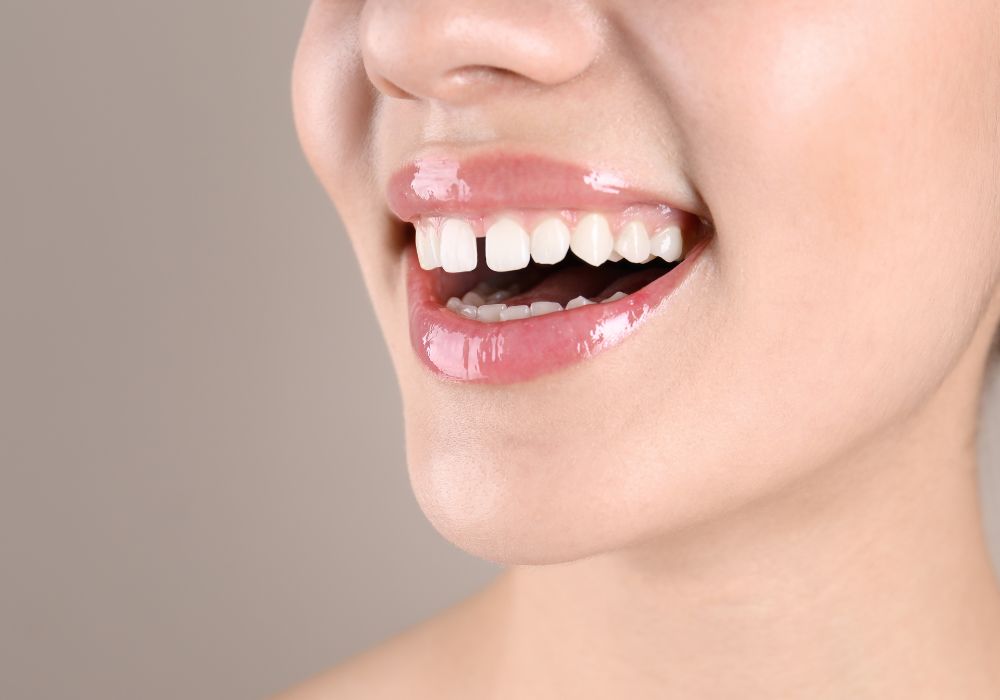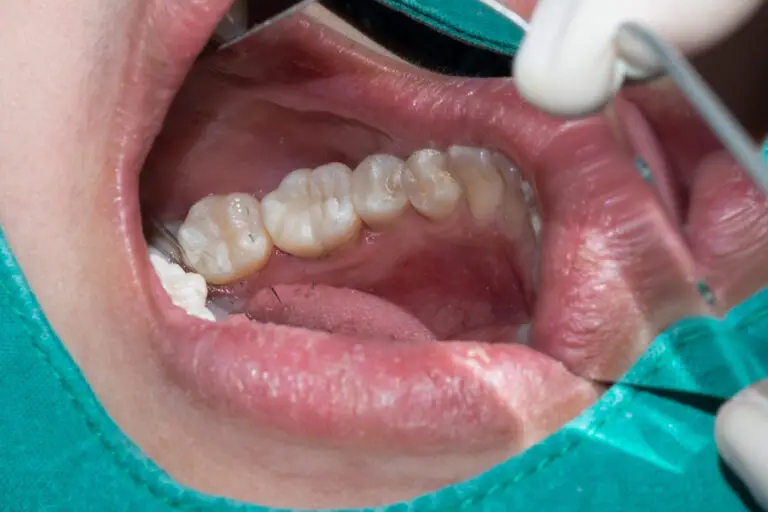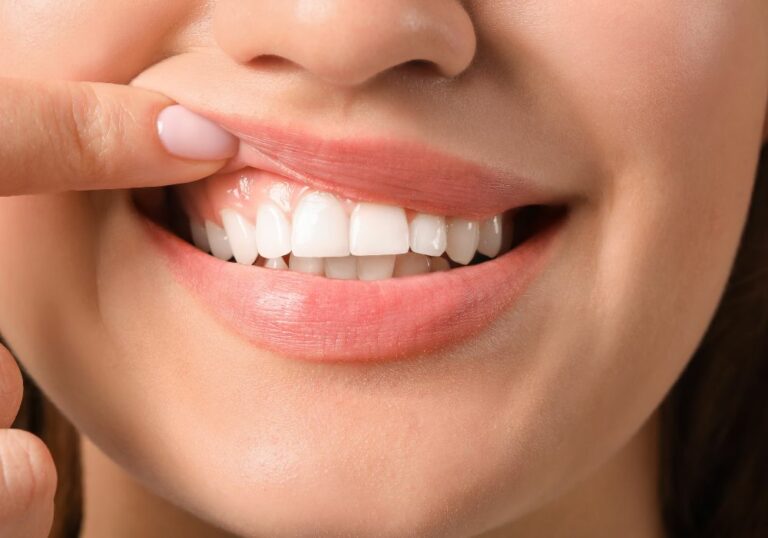Having a gap or space between the two upper front teeth is a common aesthetic concern for many adults. This gap is medically known as a diastema and has a variety of potential causes. While some gaps are temporary and may self-resolve, others persist lifelong without treatment. Luckily there are both cosmetic and medical interventions available to effectively fix or close the gap between two front teeth.
What leads to a gap between the front teeth?

Gaps between the upper central incisors have multiple possible etiologies:
- Genetic predisposition – Diastemas often run in families, with the propensity being inherited similar to other dental traits. If parents or siblings have a gap, the child is more likely to develop one.
- Oversized labial frenum – The piece of tissue that tethers the upper lip to the gums above the front teeth is called the labial frenum. An overdeveloped frenum which extends too far downward can exert pressure and create or widened a central gap.
- Missing or undersized lateral incisor – If the upper lateral incisor (next to the central) is congenitally missing or is abnormally small, this can lead to a space opening between the front two teeth.
- Thumb sucking or tongue thrusting – Prolonged childhood habits such as vigorous thumb sucking or tongue thrust swallowing can cause teeth misalignment and spacing.
- Periodontal disease – Chronic periodontitis which causes gum recession and loss of bone can lead to gaps as tissue support deteriorates.
- Aging – As adult teeth shift over time, spaces may open between them related to shortening of collagen fibers in connective gum tissue.
Methods for closing gaps between front teeth

There are advantages and disadvantage to each of the following methods used to fix gaps between the maxillary central incisors. An evaluation by a dentist is needed to decide which option is most appropriate on a case by case basis.
Orthodontic treatment with braces
Traditional or clear braces can incrementally move teeth to close a diastema. By applying pressure to the teeth over 12-24 months, braces can effectively align teeth and resolve spacing issues. This is one of the only methods that permanently moves the teeth into correct position. Downsides include high costs, multiple visits for tightening, dietary changes, and compromised aesthetics during treatment from wearing braces.
Dental bonding
A tooth-colored composite resin material can be directly applied by a dentist onto the surface of the teeth then hardened using a curing light. The bonding material can be shaped to fill in a diastema for immediate improvement. However, bonding is prone to staining and the need for periodic replacement, so results are not permanent.
Porcelain veneers
These thin shells are custom fabricated in a dental lab then bonded over the front of teeth for a dramatic cosmetic change. Veneers can create the illusion of perfectly spaced front teeth. But they require some removal of healthy tooth and are an expensive treatment. Properly cared for veneers can last over a decade.
Crowns
Like veneers, crowns cover the visible part of teeth, but require significantly more reshaping by filing down the teeth first. Crowns are utilized when more substantial tooth reconstruction is needed prior to placing artificial crowns to fix a gap. This is the most invasive approach.
Surgical frenectomy
If an oversized labial frenum is excessively pulling on the gum tissue between the front teeth, surgically removing a portion of the frenum can help close the space. This relatively simple procedure can produce great improvement in cases of a gap due to a low frenum attachment.
Orthodontic treatment process for closing gaps

Orthodontic treatment entails attaching fixed braces to gently shift teeth into ideal alignment over 1-2 years’ time. This is a detailed overview:
- Examination – Orthodontist takes photos, x-rays, impressions to assess teeth and plan treatment
- Appliance placement – Brackets are bonded to the front of each tooth then archwires placed through brackets and tightened
- Regular adjustments – At 4-8 week intervals, elastic ties are changed or archwires switched out to continue moving the teeth
- Space closure – Interarch elastics may be used to pull upper and lower teeth together to close space
- Retention – After the gap is resolved, a removable or fixed retainer needs to be worn at night to hold teeth in position
With braces, the gradual pressure on the teeth stimulates the body’s natural tooth eruption process to guide teeth into proper alignment. Braces require dedication from patients for optimal results but can permanently fix a diastema.
Comparison of orthodontics vs. veneers
Orthodontic treatment and porcelain veneers offer two different approaches to resolving a gap between the maxillary central incisors:
Braces
- Slowly moves teeth which takes over a year
- Improves overall alignment and bite
- Requires many orthodontic adjustments
- Less expensive initial cost than veneers
- Permanently closes space if retainer is worn
Porcelain Veneers
- Provide immediate cosmetic improvement
- Mimic the light reflection of natural teeth
- No need for adjustments, completed in 2-3 visits
- Do not move the teeth or improve alignment
- Much more expensive upfront cost
- Can fracture or need replacement after 5-10 years
Neither option is necessarily better, just suited to different situations and patient goals. For some, combining orthodontics with veneers yields the optimal outcome. A comprehensive dental evaluation is required to formulate the right treatment plan.
Conclusion
In summary, a gap or space between the maxillary (upper) central incisors is a common aesthetic complaint with various etiologies. Both non-invasive and more complex treatments exist to correct a diastema. The options include dental braces, veneers, bonding, crowns, cosmetic contouring, frenectomy, and clear aligners. The proper treatment choice depends on whether there are functional issues involved beyond just cosmetics, as well as time, costs and other patient factors. With the variety of modern dental treatments available however, there are excellent options to fix and close a gap between two front teeth.






